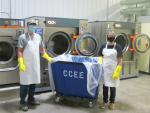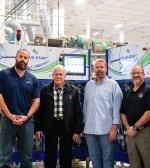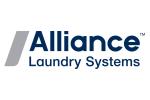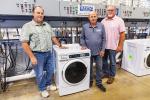CHICAGO — In healthcare, reusable textiles are effective for underpads, isolation gowns, surgical wrappers and surgical gowns.
That fact was most convincingly displayed during the pandemic.
“Many healthcare facilities, when faced with a shortage of disposable items (such as isolation gowns) turned to any reusable solution that they could find,” shares Jason Hartsell, vice president of operations for United Hospital Services (UHS) in Indianapolis.
“It was not so much that they wanted to move to a reusable product but more so that they had to move to something reusable. The FDA’s (U.S. Food and Drug Administration) Emergency Use Authorization (EUA) allowed companies to quickly bring isolation gowns to market during the pandemic without first obtaining FDA approval.”
Gabriel Boardman, president of the American Reusable Textile Association (ARTA) and vice president of product development for MIP Inc. in Montreal, adds, “The pandemic led to global supply-chain disruption for both reusable and disposable supplies.
“As a result, reusables became the preferred and more reliable option since they can be laundered and quickly return to healthcare providers in dire need of replenishment.”
“During the pandemic, healthcare workers were offered unrestricted access to personal protective equipment (PPE) to provide a greater sense of confidence to undertake their jobs and an increased sense of personal safety,” says Bryan Bartsch, a director for ARTA and president of Ecotex Healthcare Linen Service in North America.
“Reusable PPE played a critical in meeting the demand and providing the most reliable supply of PPE.”
Scott Delin, legislative director for ARTA and vice president of healthcare sales for Superior Group of Companies/Fashion Seal Healthcare in Seminole, Florida, says laundry operators were able to guarantee delivery of contaminant-free products.
“No bacteria (hygienically clean),” he says, “and by using reusable, the contaminated disposables were no longer being tossed into the trash impacting negatively our environment.”
Laundry and linen services took steps to try to continue reusable usage in healthcare facilities when the pandemic began to ease.
“Based on feedback from our members, some laundry/service providers took a more proactive approach than others to make the shift more permanent,” says Sarah Brobeck, executive director of the Association for Linen Management (ALM) in Richmond, Kentucky.
“Even when proactive, there were many considerations at hand and each varied by hospital. These considerations have a significant role in the long-term outcome of reusables versus disposables.
“The laundry providers with success in a permanent switch continue to be proactive in understanding the needs and concerns of their customers and providing viable solutions to address any potential barriers.
“They also provide continual data and feedback to the customers highlighting the benefits and cost savings associated with reusable products.”
“Some laundry/service providers put the necessary systems in place to continue to offer reusable linen,” Hartsell says. “This might be a tracking system such as RFID (radio-frequency identification) tags, barcodes, a QC (quality control) grid or adding the necessary additives to the wash process.”
“Laundry service providers took many steps, including educating users,” adds Rocco Romeo, treasurer for ALM and CEO of HLS Linen Services in Ottawa, Ontario.
ADVOCATING REUSABLE LEGISLATION
TRSA, the association for linen, uniform and facility services, shares that it recently confirmed sponsors for The Healthcare Worker Safety and Sustainability Act in New York state that requires a 50% threshold of reusable healthcare PPE in healthcare facilities.
In the state legislature, Assembly Member Amanda Septimo (D-84th District) introduced the bill (AB 6995) and Sen. Cordell Cleare (D-30th District) initiated the Senate companion measure. The legislation amends the New York public health law to require healthcare facilities to maintain this threshold of textiles as provided by a hygienically clean laundry service provider.
TRSA has been pushing for legislation to address healthcare employee safety concerns raised during the height of the pandemic as well as reduce the amount of waste healthcare facilities are sending to landfills.
“The linen, uniform and facility services industry made up for the shortfall of disposable healthcare items by stepping in to provide hygienically clean reusable products,” says Joseph Ricci, president and CEO of TRSA.
“It was a wake-up call to healthcare facilities that they need to reduce their dependence on disposable healthcare PPE. This legislation is a first step in identifying reusable healthcare PPE as a permanent solution to potential supply-chain shortages.”
“Introduction is the first step of a long legislative process; there are many initiatives that never even get drafted,” says Kevin Schwalb, TRSA’s vice president of government relations.
“Now that we have introduction, it is going to take effort from everyone in New York to move the process forward and ultimately pass the bill. This legislation is a direct result of the actions TRSA members took during our day in Albany (during TRSA’s New York Legislative Conference in April).”
Aside from New York, TRSA is working in other states such as California and Wisconsin to introduce and ultimately pass reusable operating threshold minimums.
TRSA is also urging its members to contact their respective legislators to prompt them to add their names to a letter from members of Congress asking the Department of Health and Human Services (HHS) to examine the feasibility and potential benefits of the increased use of reusable healthcare textiles (HCTs) in hospitals and other medical facilities.
Reps. Greg Landsman (D-OH-01) and Michael Carey (R-OH-15), encouraged by TRSA, were the original authors of the letter, which asks HHS Secretary Xavier Becerra to study the issue considering reusables’ value in protecting healthcare workers, addressing the rising environmental impact of disposables, preparing for future pandemics and potentially providing cost savings.
This letter is a major step in developing federal policy to require healthcare facilities to maintain an operating stock of reusable HCTs.
“This is a huge win for the linen, uniform and facility services industry,” Schwalb says. “Secretary Becerra will be compelled to respond to a congressional Inquiry, which usually leads to a form of federal policy being either legislation or regulation.”
While securing Reps. Landsman and Carey as chief co-signers was a major step, the more names on the letter, the more impact the letter will have at HHS, Schwalb adds.
TRSA has taken advantage of the Pandemic and All-Hazards Preparedness Act (PAHPA) reauthorization process to state the case for making reusable isolation gowns and other textiles more prominent in hospital inventories.
The association has provided the House Energy and Commerce Committee with key evidence that increased use of reusable textiles will support efforts to assure the nation is better prepared, further equipped, more transparent and fully accountable when taking on future emergencies.
TRSA’s response to a Request for Information (RFI) from Reps. Richard Hudson (R-NC) and Anna Eshoo (D-CA) as part of the reauthorization process was the most recent step in the association’s effort to impact hospital inventories under PAHPA.
The pictures of healthcare workers wearing trash bags as PPE highlighted PPE shortages at the onset of COVID-19.
PAHPA covers administration of the Strategic National Stockpile (SNS), which contained about 60 million surgical gowns and coveralls in October 2022, without clear accounting of how many were reusable or disposable.
TRSA has urged Congress to ensure that the SNS contains a suitable number of reusable PPE to be prepared for supply-chain disruptions during an emergency. This could be done by requiring a specific number or percentage of reusable PPE in the SNS.
In the U.S., more than 90% of healthcare PPE and operating room textiles are single use, even though ample supplies of reusable equivalents are available, TRSA notes.
In contrast, Canada and England maintain inventories of 80% reusables. The association cites studies showing that reusable textiles are as safe—if not safer—than their disposable counterparts and pointed out that reusable PPE can be laundered and returned to healthcare facilities without stressing the supply chain during an emergency.
FINAL THOUGHTS
Hartsell stresses that laundry providers aren’t alone in their struggle to convince healthcare operators of the benefits of reusable usage.
“Rely on the manufacturer for your educational material or to assist you in your presentation,” he says. “It’s in both of your interests to convert items to reusable.
“It is also beneficial to have the manufacturers involved because with some items the healthcare facilities may ask very technical questions that you, as a laundry, may not know the answer to.”
Hartsell also stresses the importance of research when identifying potential items to switch for a healthcare provider.
“Do they have any environmental initiatives? Are they trying to reduce HAIs? Did they have supply-chain shortages with disposable isolation gowns? Are they using disposable underpads on every single bed?
“From my research, I’m going to be able to offer a reusable solution that fits their needs versus coming at them with everything all at once.
“I’m also going to be willing to offer them a trial in a certain department. It’s important that if I trial an item, I get feedback from the caregivers in this department.”
Finally, Hartsell says a laundry must be uncompromising in its system if it has an item that is inspected or has cycle recording.
“The end-user has to have complete trust in your laundry, the products you offer and the process you have in place,” he concludes.
Miss Part 1 on how healthcare systems’ return to disposable textiles has operators increasing efforts for reusable usage? Click HERE to read it.
Have a question or comment? E-mail our editor Matt Poe at [email protected].




















































































































































































































































